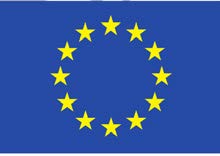Evaluation of the COVID-19 Era by Using Machine Learning and Interpretation of Confidential Dataset
Various research approaches to COVID-19 are currently being developed by machine learning (ML) techniques and edge computing, either in the sense of identifying virus molecules or in anticipating the risk analysis of the spread of COVID-19. Consequently, these orientations are elaborating datasets that derive either from WHO, through the respective website and research portals, or from data generated in real-time from the healthcare system. The implementation of data analysis, modelling and prediction processing is performed through multiple algorithmic techniques. The lack of these techniques to generate predictions with accuracy motivates us to proceed with this research study, which elaborates an existing machine learning technique and achieves valuable forecasts by modification.
More specifically, this study modifies the Levenberg–Marquardt algorithm, which is commonly beneficial for approaching solutions to nonlinear least-squares problems, endorses the acquisition of data driven from IoT devices and analyses these data via cloud computing to generate foresight about the progress of the outbreak in real-time environments. Hence, we enhance the optimization of the trend line that interprets these data. Therefore, we introduce this framework in conjunction with a novel encryption process that we are proposing for the datasets and the implementation of mortality predictions.
Read the full text: Click here!


